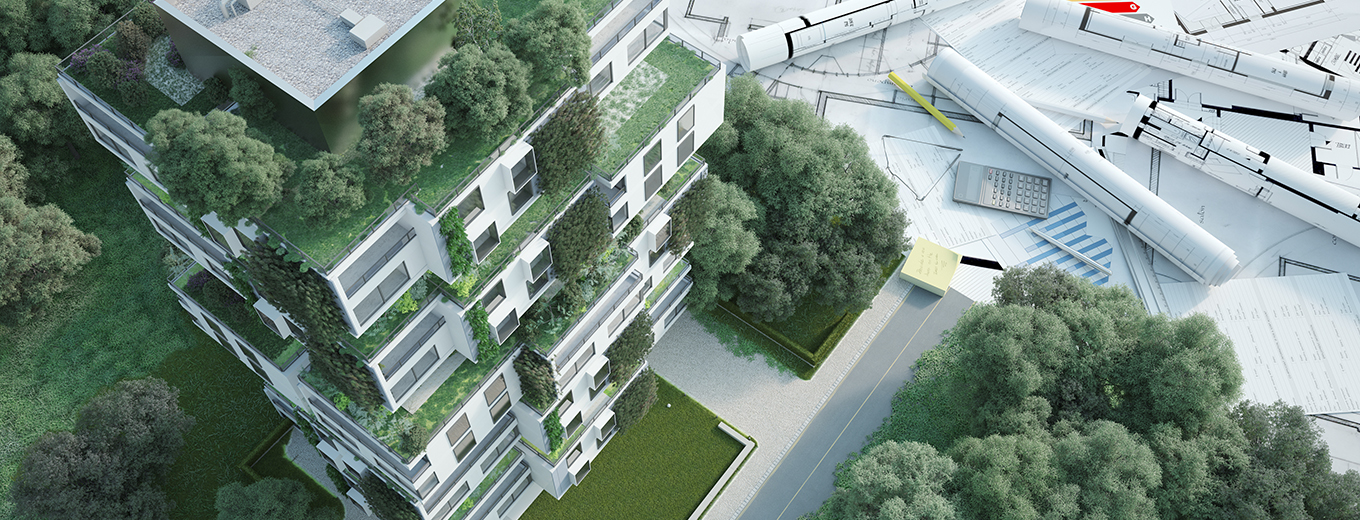The New European Bauhaus Nexus Report provides recommendations and long-term strategies. An important focus is on Missions under Horizon Europe.
The “Horizon Europe – New European Bauhaus Nexus Report”, published on 11 February 2022, shares the conclusions of a high-level workshop between various experts that took place on 30 November 2021 and was organised by DG Research and Innovation and the Joint Research Centre (JRC). Experts from fields such as architecture, built environment, design, climate and energy all came together in order to provide recommendations and outlooks for the New European Bauhaus (NEB) initiative. The NEB, which was first introduced back in September 2020, aims to build sustainable, aesthetic and inclusive living spaces and is in line with the EC’s priority of a European Green Deal (see SwissCore article). The New European Bauhaus Nexus report focuses on short-term actions related to the current funding period of 2021-2022, mid-term goals and recommendations for the period of 2023-2024, long-term actions and approaches for the period after 2024, and general strategic priorities for the EU’s response to the climate crisis.
The report first touches upon the NEB objectives relevant to the Horizon Europe work programme 2021-2022. Since the work programme had been adopted before the NEB was announced, the work programme was later reviewed to flag specific calls that were in line with the NEB. There were various NEB-relevant calls, which can be found in all six clusters of Pillar II of Horizon Europe. With a view to the work programme 2023-2024 currently under preparation, the report identifies multiple challenges that the NEB might face and considers corresponding solutions. The experts mention a vast number of recommendations, concerning for example the reduction of greenhouse gas emissions and minimising the extraction of new materials. Further topics considered include efficient and sustainable utilisation of forest resources that maintains biodiversity, combining traditional and newfound knowledge for using material in a resource- and energy-efficient manner, supporting the combined use of nature-based materials with reused and recycled materials, or taking into account the health and well-being of citizens and the environment. Moreover, the report suggests expanding the scope of digital tools in environmental approaches and establishing Open Innovation Testbeds to promote research and development. The experts further point out the importance of supporting marginalised self-provisioning communities and encouraging local innovation, as well as taking into account demographic pressures and urbanisation.
Finally, the NEB Nexus Report also provides ideas and strategies for the period of the Horizon Europe work programme 2023-2024, as well as for the period after 2024. While there are NEB-relevant calls in all six clusters within Pillar II of the Horizon Europe framework, the report points out how it can be difficult to fit projects related to the NEB into one certain Cluster. This is why, for the period of 2023-2024, they suggest either the creation of an additional Cluster in order to pursue “adequate systemic innovation” or the establishment of a cross-cluster platform within Pillar II. Furthermore, they suggest expanding the scope of the EU Mission 4 (‘Climate-Neutral and Smart Cities) in Horizon Europe by including NEB objectives such as turning 20 out of the 100 Mission cities into NEB cities by 2030. The last point mentioned regarding the 2023-2024 period is using expertise and capacities of the European Institute of Innovation & Technology (EIT) to support the NEB objectives, for instance having the Climate-KIC help manage the above-mentioned expanded Mission 4 of the EU. As regards the strategy after 2024, the report proposes amending two additional EU Missions – Mission 1 (‘Adaptation to Climate Change’) and Mission 5 (‘Soil deal for Europe’) – for them to have a clearer focus on the NEB initiative, or even creating a sixth Mission on built environment that addresses such issues in a transdisciplinary manner. Additionally, they suggest launching a competition in 2025 for a master plan to establish so-called “Transition Super-Labs” that would facilitate rapid decarbonisation. The report further points out the importance of strengthening international cooperation and creating worldwide partnership programmes to achieve the NEB objectives, as it is not sufficient to achieve those objectives only in Europe. Lastly, they suggest the establishment of a scholarship programme or even a New European Bauhaus Academy in order to strengthen the NEB initiative by including students, scholars and (especially young) researchers.
Until 28 February 2022, applications for the 2022 NEB Prizes are now open, which will award 18 winners with prize money of up to €30’000 and a communication package that helps them further develop their projects and ideas. In addition, a Festival of the New European Bauhaus will take place in Brussels between 9 and 12 June 2022. It will provide a forum for discussion on the core values and principles of the New European Bauhaus initiative, with multiple speakers from all over the world. Moreover, the festival will include a fair with various exhibitions on projects related to the New European Bauhaus initiative, serving as a networking opportunity especially for young artists and innovators to allow for an exchange of ideas. The festival will also have a cultural programme, with performances and other contributions ranging from music and theatre to design and architecture.

